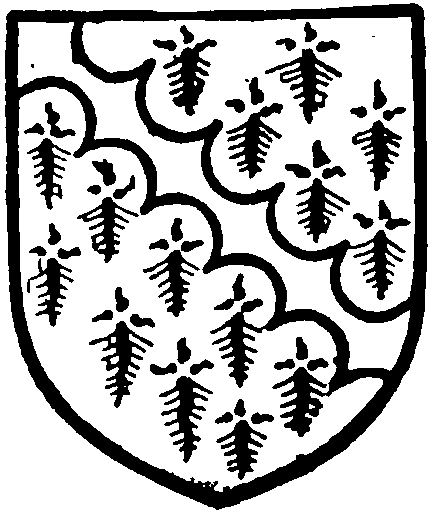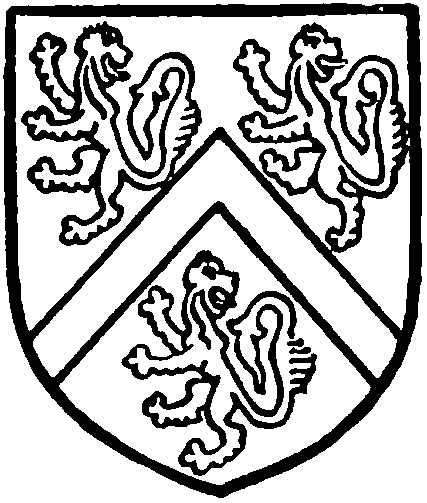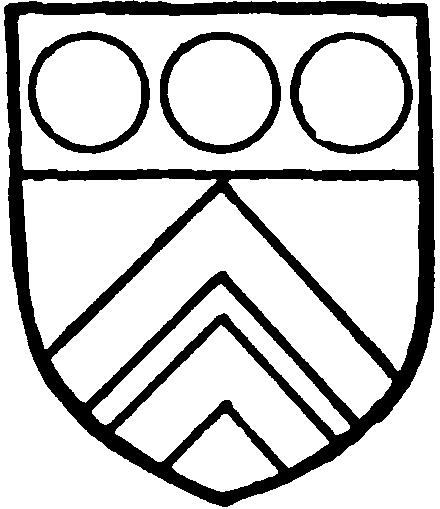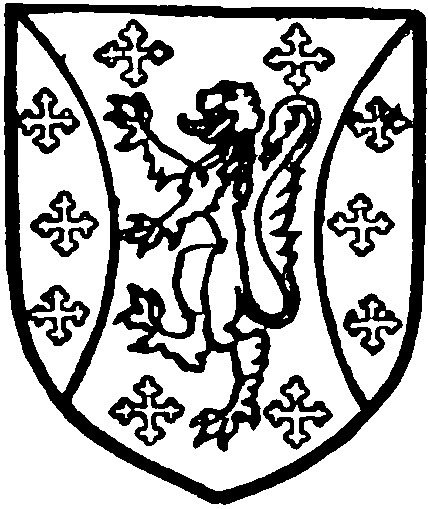A History of the County of Hampshire: Volume 3. Originally published by Victoria County History, London, 1908.
This free content was digitised by double rekeying. All rights reserved.
'Parishes: Kilmeston', in A History of the County of Hampshire: Volume 3, ed. William Page (London, 1908), British History Online https://prod.british-history.ac.uk/vch/hants/vol3/pp323-325 [accessed 31 January 2025].
'Parishes: Kilmeston', in A History of the County of Hampshire: Volume 3. Edited by William Page (London, 1908), British History Online, accessed January 31, 2025, https://prod.british-history.ac.uk/vch/hants/vol3/pp323-325.
"Parishes: Kilmeston". A History of the County of Hampshire: Volume 3. Ed. William Page (London, 1908), British History Online. Web. 31 January 2025. https://prod.british-history.ac.uk/vch/hants/vol3/pp323-325.
In this section
KILMESTON
Chenelmestune (x cent.); Chelmestune (xi cent.); Culmiston Gymminges, Kilmeston Gymminges, Culmiston Plugnett, Kilmeston Plunkenet (xiii, xiv, xv cent.); Culmeston, Kympston (xvi cent.).
The small parish of Kilmeston containing 1,670 acres of land lies on the chalk down country south-east of Winchester, the land rising generally from north to south from under 300 ft. near Hinton Ampner to over 500 ft. in the south-west near the high down country in the north-west of Exton parish.
The long straggling village of Kilmeston lies almost in the centre of the parish. As the road from Hinton Ampner, leading south, rises towards Kilmeston village a sudden turn to the west leads past the vicarage, which stands on high ground south of the road, on to the church of St. Andrew, which stands also on the south of the road opposite the fine old manor-house. Past the church the road branches north to College Farm, and south to the scattered cottages, the smithy and the school composing the rest of the village.
Dean House, the residence of Mr. Charles Naylor, stands in good grounds to the east of the village.
Westwood, a large copse stretching for about half a mile along the western boundary line of the parish, together with a wood called Broomwood in the east, comprises the greater part of the 81 acres of woodland in the parish. The 553 acres of permanent grass are mostly in the south and south-west of the parish, where there are stretches of low downland known as Kilmeston Downs. The 911½ acres of arable land lie mostly in the north and north-east. The soil is clay with a subsoil of chalk, producing the ordinary crops of wheat, oats, and barley.
The manor-house is an interesting building, partly of brick and partly of timber construction. It has a central hall, and wings on the north and south, the latter being of half timber, hung with tiles and containing the kitchens and offices. On the east side is a court and terrace leading to the entrance to the hall, but the principal entrance is at the north-west. On the west side are two early seventeenth-century gables of cut and moulded brickwork with an enriched cornice and projecting pilasters of very good detail, and the main building is probably of this date, though the timber part may be earlier. The main block is of two stories, the hall having had a flat ceiling with rooms over it; the detail in this part of the building belongs to the first half of the eighteenth century. The hall ceiling has been taken down, throwing it open to the upper floor, round which a gallery runs. In the north wing is a good Jacobean angle chimneypiece, but this part of the house was remodelled early in the nineteenth century to accommodate George IV, then prince regent, who lived here for some time, and is credited with having written with a diamond on one of the lattice panes in the kitchen window a few lines of verse, which have, however, the appearance of being before his time.
MANORS
Land at KILMESTON was in the possession of the cathedral church of Winchester as early as the tenth century; for in 961 King Edgar, under a licence from the bishop of Winchester, to whom the land belonged, granted 10 mansae at Kilmeston to the thegn Athulf for three lives. On the death of the last survivor the land was to return to the church of St. Peter at Winchester. (fn. 1)
At the time of the Domesday Survey the 10 mansae were divided equally and formed two manors of 5 hides each, both belonging to the bishop, one being held by Edred, apparently in right of his wife, and the other by Godwin. (fn. 2) These manors became known as Kilmeston Plunkenet and Kilmeston Gymming from the names of the families who afterwards held them.
The manor of KILMESTON PLUNKENET, sometimes called half the manor of Kilmeston, was evidently granted by the bishop to the de la Beres; and about 1230 Richard de la Bere enfeoffed Alan de Plunkenet of the manor, (fn. 3) and he in 1295, together with his wife Joan, granted it to Alan de Plunkenet, junior, and his wife Sybil, to be held for the rent of a rose, with reversion (in case of the failure of heirs to the younger Alan) (fn. 4) to the heirs of Alan de Plunkenet, senior.
Before the death of Alan de Plunkenet, junior, his sister and heir Joan de Bohun, who died s.p., appears to have disposed of her claim to the estate to Walter de Woodlock, and although she attempted subsequently to repudiate her grant the right of Walter was established. (fn. 5)

Plunkenet. Ermine a bend engrailed gules.
Walter Woodlock was succeeded by his son Nicholas, who held Kilmeston Plunkenet in 1346, (fn. 6) and after his death his widow Joan was seised in fee tail of the manor. She granted it to certain trustees for their lives and died leaving an infant heir, her grandson Thomas. (fn. 7) Sir Almaric de St. Amand claimed the custody of the manor and the heir on behalf of the feoffees, but was successfully sued by William, bishop of Winchester. (fn. 8)

Woodlock. Sable a cheveron between three lions argent looking backwards.
From the Woodlocks the manor evidently passed to William Spershute or Sparsholt, who was holding it in 1428 and 1431, (fn. 9) but no record of this transfer can be found.
After 1431 no mention of the manor of Kilmeston Plunkenet has been found until the early part of the sixteenth century, by which time it had been divided into two parts, one being in the hands of the Skillings, and the other in the possession of the Bengers.
Mary Skilling was the widow of Walter Skilling, of Draycott, and daughter of John Ernelay of Marwell. (fn. 10) The Ernelays had a good deal of land in Sparsholt near Romsey; it is therefore quite probable that they were in some way connected with William de Sparsholt or Spershute, who was holding Kilmeston Plunkenet in 1431. There may have been a marriage connexion, though no trace of one can be found, or William de Sparsholt may have been a member of the Ernelay family; in support of this theory is the fact that both William de Sparsholt and John Ernelay were called 'of Marwell.' The half of Kilmeston Plunkenet manor held by the Skillings was granted to Richard Badger by Mary Skilling in 1570, probably as a settlement, (fn. 11) and in 1585 William, Mary's son, was holding half the manor and made a settlement of it in that year. (fn. 12) In 1605 William Skilling and his wife Margery, Swithun Skilling his brother and his wife Jane, and Edward Skilling sold half the manor of Kilmeston Plunkenet to William Lacie. (fn. 13) From this time onwards the descent of this half of Kilmeston Plunkenet manor becomes the same as that of the manor of Kilmeston Gymming (q.v.). John Benger died seised of the other half of the manor of Kilmeston Plunkenet in 1520, leaving as his heir his grandson Richard, a boy of thirteen. (fn. 14) On the death of Richard, in 1530, the manor passed to his widow Katharine, (fn. 15) and subsequently to her second husband, John White, and his heirs. The other heirs of Richard surrendered their claim, (fn. 16) and from this time until 1660 the estate followed the same descent as Southwick (q.v.).

Skilling. Argent two cheverons gules and a chief gules with three hezants therein.
Richard Norton was still holding the manor in 1660, evidently in conjunction with the Lacies, who were also holding the other moiety of Kilmeston Plunkenet and the manor of Kilmeston Gymming, (fn. 17) and from this time the two moieties of the manor are reunited and the whole follows the descent of Kilmeston Gymming (q.v.), with which it finally became amalgamated.
The manor of KILMESTON GYMMING was apparently granted at an early date by the bishop of Winchester to the Gymming family, from whom it took its name, for in 1282 Nicholas de Gymming died seised of half the manor of Kilmeston leaving a son and heir John, aged eighteen. (fn. 18) In 1307 a licence was granted to Simon de Fareham and Robert de Harvedon, who were evidently trustees for the Gymming estates, to alienate the manor of Kilmeston Gymming in mortmain to Richard de Bourne, provost of the chapel of St. Elizabeth at Winchester, (fn. 19) and the manor remained in the hands of the provosts of this chapel until the Dissolution, after which it was granted (in March, 1544) to Thomas Wriothesley, together with all customary services; (fn. 20) it was held by him until the following June, when he conveyed it to Anthony Cope, (fn. 21) who received licence in 1579 to alienate the manor to John Tichborne and his heirs. (fn. 22) A little later in the same year John Tichborne conveyed the manor to William Lacie, in whose family it remained for 160 years. (fn. 23) William Lacie died in 1595 seised of the manor of Kilmeston Gymming charged with annuities to Nicholas and Henry Tichborne. He left a son William, who died in 1614. (fn. 24)
William Lacie son of the last William (fn. 25) was sequestered in 1645, (fn. 26) but he recovered his estates and his family held the manor for nearly another century. About the year 1677 it became united with Kilmeston Plunkenet, and in 1739 Henry Lacie and his wife, John Caryll, William Lacie, and George Lacie sold the manor of Kilmeston Gymming or Plunkenet to George Ridge. (fn. 27) The Ridges apparently held the manor for some time, and ultimately sold it to Robert Westley Hall, from whom in 1810 it was bought for £19,152 8s. 5d. (fn. 28) by Edmund Smith, £13,000 of the purchase money being raised by a mortgage on the estate to Richard and John Sparkes and Sarah Shurlock. (fn. 29)

Long of the Holt. Sable a lion between four crosslets argent with two flaunches argent each charged with three crosslets sable.
Walter Long purchased the whole manor from Edmund Smith and the mortgagees in 1812, (fn. 30) and it has remained in his family ever since; Mr. Walter Long of The Holt, Beauworth, being lord of the manor at the present day.
CHURCH
The church of ST. ANDREW is in plan a simple rectangle with a modern south aisle and north porch, and any ancient features which it may possess are hidden by plastering and ivy. There is no structural division between nave and chancel. With the exception of the east window of the chancel, which has modern threelight tracery of fourteenth-century style, all the windows in the church, two in the chancel and five in the nave, are single lancets of decidedly modern appearance. The north door has a plain chamfered pointed arch, covered with plaster, and impossible to date, and the south arcade of the nave is of two bays in modern brickwork, with a vestry at the west of the aisle. The roof is tiled, and at the west is a wooden bell-turret with a leaded spire, containing one bell dated 1772 without further inscription.
The font is urn-shaped, of the eighteenth century, and there are no old fittings in the church, except that below the south window of the chancel is a piscina and a square locker.
The plate includes an interesting and perhaps local cup, with a trumpet-shaped bowl, on which is a band of incised ornament, and a spreading conical foot. It is without marks, and in spite of the incised band of ornament is probably of the latter part of the seventeenth century. There is also a standing paten of 1700.
The first book of the registers, which contains a memorandum that it was bought 1 June, 1671, at Winchester, runs from 1661 to 1812, and there is also an overseer's book of accounts beginning in 1691.
ADVOWSON
There was a chapel in Kilmeston at the time of the Domesday Survey, (fn. 31) which was annexed to the rectory of Cheriton, and the advowson therefore followed the descent of Cheriton (q.v.). By an order in council, however, dated 4 February, 1879, the chapelries of Kilmeston and Beauworth were separated from the old rectory of Cheriton and formed into a distinct parish for ecclesiastical purposes. The living is now a vicarage in the gift of the crown.
CHARITIES
In 1706 Dame Mary Sadlier by her will proved this date in P.C.C. bequeathed £100 to be laid out in land or otherwise, profits to go towards teaching poor children to read and write. A moiety of the legacy was lost through the insolvency of the holder, the remaining £50, with accumulations, was in 1803 invested in £124 19s. 11d. consols, held by the official trustees. The dividends are now applied in connexion with the National School. (fn. 32)
